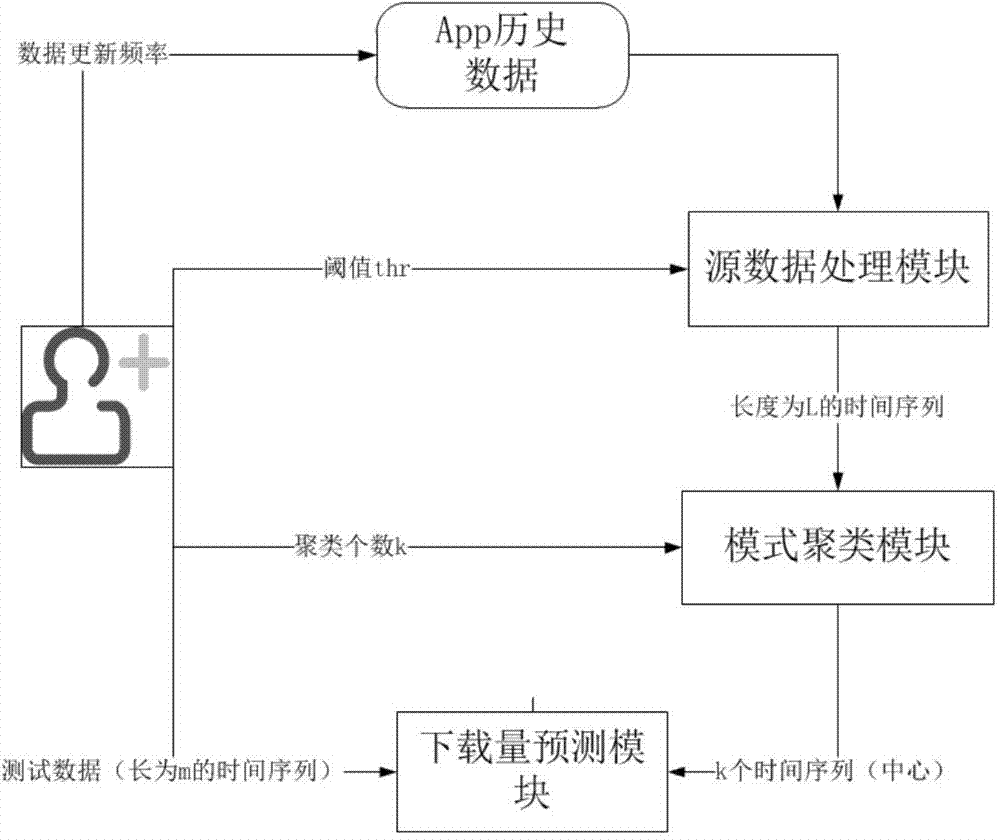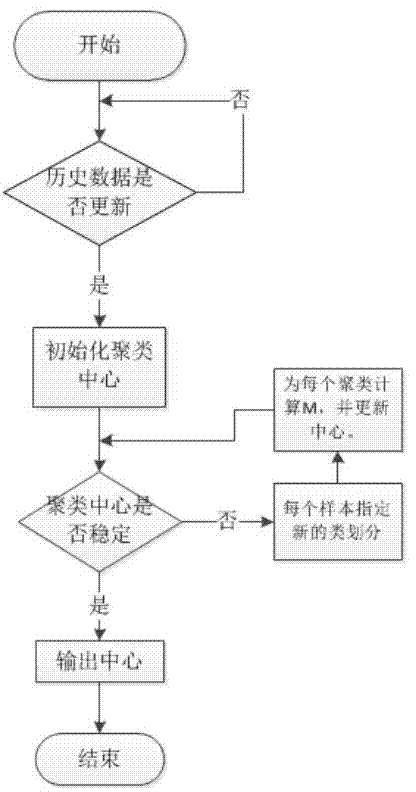Mobile application download prediction method based on cluster
A forecasting method, technology for mobile applications, used in data processing applications, business, instrumentation, etc.
- Summary
- Abstract
- Description
- Claims
- Application Information
AI Technical Summary
Problems solved by technology
Method used
Image
Examples
Embodiment Construction
[0043] Refer to attached picture.
[0044] The method for predicting download volume of the present invention comprises the following steps:
[0045] 1) Obtain the historical data of the app to be predicted from the background data, including the download amount of the app within the known m days;
[0046] 2) Source data processing: process the data in step 1) to generate a discrete time series x of length L to represent the download curve of each app, so far the download curves of all apps form a discrete time series training data set, specifically Include the following steps:
[0047] Described step 2) specifically comprises the following steps:
[0048] (1) The download threshold thr is given; thr is an artificially specified parameter, and the default thr=0.1. On the basis of thr determination, the L of the entire training data set can be calculated 1 and L 2 , generally adjust thr so that L 1 +L 2 Not less than 2 / 3 of the length of the original sequence.
[0049]...
PUM
 Login to View More
Login to View More Abstract
Description
Claims
Application Information
 Login to View More
Login to View More - R&D
- Intellectual Property
- Life Sciences
- Materials
- Tech Scout
- Unparalleled Data Quality
- Higher Quality Content
- 60% Fewer Hallucinations
Browse by: Latest US Patents, China's latest patents, Technical Efficacy Thesaurus, Application Domain, Technology Topic, Popular Technical Reports.
© 2025 PatSnap. All rights reserved.Legal|Privacy policy|Modern Slavery Act Transparency Statement|Sitemap|About US| Contact US: help@patsnap.com



